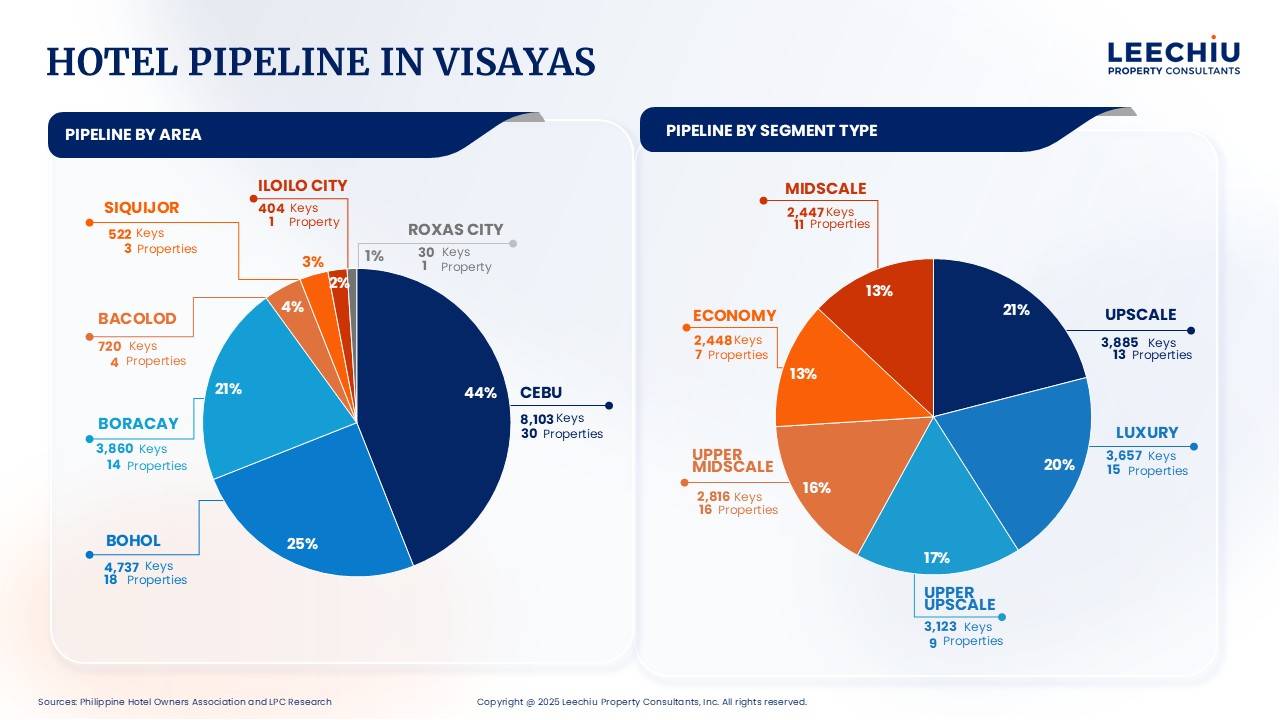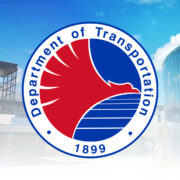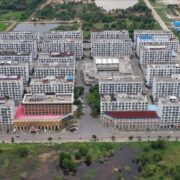Hotel developers bet big on Visayas

Hotel development in Visayas is gaining momentum, driven by a growing pipeline, rising tourist arrivals, and increasing investor interest.
Traditionally anchored by tourist hotspots like Boracay and Cebu, the region is now experiencing broader growth, with areas such as Bohol, Bacolod, Siquijor, and Iloilo seeing rising attention from both developers and travelers. This expansion is creating a more diverse hospitality landscape that’s attracting a wide range of interest.
Expanding beyond Cebu and Boracay
While Cebu and Boracay continue to be key hotel hubs, development is now spreading throughout the Visayas.
In Bohol, 18 new projects on Panglao Island—mostly upper upscale and branded hotels—aim to position the area as a luxury resort destination.
Bacolod is drawing developers with its improved infrastructure, vibrant culinary scene, and growing meetings, incentives, conferences and exhibitions (MICE) potential, while Siquijor and Iloilo are piquing the interest of homegrown brands looking to tap into new markets.
The growing pipeline includes luxury resorts, branded residences, serviced apartments, and mixed-use developments, with several global brands entering the market to meet rising demand before it fully matures.
Tourist arrivals boost market confidence
Tourist arrivals in the Visayas are steadily recovering, with growth extending beyond Cebu to provinces like Bohol and Bacolod. Siquijor, in particular, has emerged as a popular destination for younger travelers seeking nature and beach getaways.
The region caters to a wide range of visitors, from divers and surfers to festival-goers and heritage seekers. Events like MassKara and Dinagyang, diving spots like Malapascua, and surf destinations like Calicoan Island enrich the travel experience, while cities like Iloilo offer both cultural and business appeal.
What’s driving investor interest
Several factors make Visayas an attractive destination for hotel investors.
Land and development costs are generally lower than in Metro Manila, improving the financial viability of projects.
Ongoing infrastructure improvements—such as airport expansions in Cebu and Bohol, road upgrades, and increased inter-island connectivity—further enhance the region’s potential.
Supportive local government units (LGUs) and the presence of tourism enterprise zones offer additional incentives as well. Moreover, local universities and colleges provide a steady stream of tourism and hospitality graduates, helping to meet workforce demands for new and existing hotel projects.
Challenges and considerations
Despite its growth, Visayas faces key challenges.
Infrastructure gaps persist in less-developed towns, and staffing shortages remain a concern, especially in remote areas. In destinations like Bohol and Siquijor, developers have raised concerns about limited power supply, which struggles to keep pace with growing demand.
To ensure long term sustainability, developers must balance rapid expansion with responsible growth, working closely with LGUs to align tourism development with infrastructure capabilities.
As the region’s hospitality landscape evolves, collaboration will be key to unlocking the full potential of Philippine tourism.
The author is an assistant Research manager of Hotels, Tourism, and Leisure at Leechiu Property Consultants Inc.
The author is a senior researcher for Hotels, Tourism, and Leisure Department of Leechiu Property Consultants Inc

















